Rob Bignell's Blog, page 353
November 15, 2013
Tweet your book to popularity
One of  the best ways to connect with readers who might be interested in reading your book is through Twitter. The idea of Twitter is to send out brief 140-word messages, known as “tweets,” to all who become your “followers.”
the best ways to connect with readers who might be interested in reading your book is through Twitter. The idea of Twitter is to send out brief 140-word messages, known as “tweets,” to all who become your “followers.”
The first step is setting up a Twitter site. That’s easy enough to do, but you’ll then have to decide the site’s name, the picture or avatar that accompanies you tweets, and what your background looks like.
You want to keep the Tweeter site’s name as close as possible to your website’s name, though that’s not always possible as your book’s title may be too long to fit into a Twitter name; if so, abbreviate and come as close as can. There’s a spot under your site’s name where you can explain that visitors are at the official Twitter site for your book.
The avatar should be of the book’s cover. If you’ve written several books in a series, you might use the series’ logo (if you have one) or a picture of yourself.
The background can be plain, but if you’ve got a clever idea that will help make your page look more attractive, go for it. Just make sure the colors in your background work well with your book cover.
The next challenge is to start tweeting. You can tweet the exact some topics that you might write a blog about, such as upcoming book signings/readings, when the book appears in newspaper or magazine articles, expert tips/advice you might give, and so on. Because of the similarities, I simply tweet my daily blog entry when promoting my boooks. The blog entry’s title and URL appear in each tweet. For example, the blog entry “How to avoid and treat altitude sickness” would be tweeted as:
How to avoid and treat altitude sickness: http://hikeswithtykes.blogspot.com/20...
You also might retweet other entries that would be interesting to your readers. A retweet is tweeting a tweet that someone else already has tweeted (confused yet?). For example, if you’re a science fiction author specializing in space opera, and astronomers discover a new exoplanet, you might retweet an article about it that you saw on your favorite news website. Be careful of retweeting competitor’s work, though. Remember, you’re using Twitter to sell your book, not theirs.
The best time to tweet, according to studies, is between 9 a.m. and 10 a.m. Pacific Time. That’s when the largest percentage of Twitter users are online. Since Twitter users go to the site at different times of the day and often are inundated with tweets, there’s nothing wrong with retweeting your original tweet at another time. More than one tweet per hour, however, probably is overdoing it.
Finally, your tweets will simply end up in Twitter oblivion if you don’t tackle the next challenge with gusto: Finding followers. All followers receive your tweet. Begin finding followers by stating on your blog and other social media efforts that you a Twitter site. Then, start following other people who tweet, especially those with topics and interests similar to your own. To find followers for my hiking site, I daily type “hiking kids” and “hiking children” into the Twitter site’s search engine. When other tweets with those words pop up, I follow the person who tweeted it. Ultimately, a few of those you follow will in appreciation follow you. Your tweets then will appear on their Twitter page – and in that way those who follow your followers will be introduced to your book.
Need an editor? Having your book, business document or academic paper proofread or edited before submitting it can prove invaluable. In an economic climate where you face heavy competition, your writing needs a second eye to give you the edge. I can provide that second eye.
Related articles
 Writers can blog about variety of topics
Writers can blog about variety of topics Does your book cover design matter for ebooks?
Does your book cover design matter for ebooks? Attract and keep readers via blogging
Attract and keep readers via blogging How long and frequent should author's blog be?
How long and frequent should author's blog be?
November 14, 2013
How to determine your book’s trim size
As going  through the self-publishing process, you’ll certainly be asked to set the book’s trim size. This is the final size of a printed page (or the actual size of a book’s page). If you took a ruler and measured the page’s bottom (or top) edge and either its left or right side, you’d have its trim size or the book’s dimensions.
through the self-publishing process, you’ll certainly be asked to set the book’s trim size. This is the final size of a printed page (or the actual size of a book’s page). If you took a ruler and measured the page’s bottom (or top) edge and either its left or right side, you’d have its trim size or the book’s dimensions.
Knowing the trim size is vital. Usually a book is printed on larger paper than what the book will be, and then the pages are cut to their correct size. The trim size tells the printer what measurements to cut the page to – hence the term “trim.”
Books typically are cut to a few specific trim sizes, which aids in the shipping of the books between printer and bookstore. To save on shipping and storage costs, many distributors only handle these standard book sizes. Because of this, many self-publishing companies suggest specific trim sizes for your book.
Among the typical trim sizes in self-publishing are (all measurements are inches):
g 5 x 8 – Usually the smallest size for a novel
g 5.5 x 8.5 – Often the largest size for a novel and a common standard size for nonfiction works
g 6 x 9 – Another common size for a nonfiction book
g 8 x 10 – Textbook and picture book size
You can go with other sizes than these (this book does), but if a nonstandard trim size, it can limit your sales opportunities. It also can increase your costs as you may need more paper than typical to trim the book to the size you desire.
Sometimes the color paper you select will limit the trim size. Paper with a white background should give you the widest selection of trim sizes.
Bleed area
In addition, you may come across the term “bleed,” a term somewhat related to trim size.
All print presses move slightly as paper passes through it, so sometimes gaps will appear between an image and the paper’s edge, resulting in a blurred picture. To avoid this, images typically don’t end at the paper’s edge but instead extend outside of the page area – in other words, the image will “bleed” off the page.
The measurement for the bleed area is how many inches from the paper’s edge that the image goes off the paper. In the United States, this typically is 1/8 of an inch.
Need an editor? Having your book, business document or academic paper proofread or edited before submitting it can prove invaluable. In an economic climate where you face heavy competition, your writing needs a second eye to give you the edge. I can provide that second eye.
Related articles
 What needs to go on your book's title pages
What needs to go on your book's title pages Formatting main text for your book
Formatting main text for your book How to find a literary agent for your book
How to find a literary agent for your book How to determine your book's trim size
How to determine your book's trim size How long and frequent should author's blog be?
How long and frequent should author's blog be?
November 13, 2013
Concrete advice on literally vs. figuratively
When writers 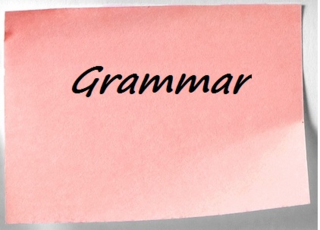 misuse these two words, you have to wonder just what they’re getting at.
misuse these two words, you have to wonder just what they’re getting at.
“Literal” means you’re saying exactly what happened. “Figurative” means you’re speaking metaphorically.
So, during a headache, one’s head “figuratively explodes” not “literally explodes.”
“Literally explodes” also is a cliche, but that actually is another matter.
Need an editor? Having your book, business document or academic paper proofread or edited before submitting it can prove invaluable. In an economic climate where you face heavy competition, your writing needs a second eye to give you the edge. I can provide that second eye.
Related articles
 Get out front of this pair: Forward vs. foreword
Get out front of this pair: Forward vs. foreword All in order: Follow up vs. follow-up vs. followup
All in order: Follow up vs. follow-up vs. followup Cracking a bad habit: cement vs. concrete
Cracking a bad habit: cement vs. concrete Two l's or not two l's: Canceled vs. cancelled
Two l's or not two l's: Canceled vs. cancelled Improve your writing by dumping fuzzy words
Improve your writing by dumping fuzzy words
November 12, 2013
Delete laugh track from your story
Another way 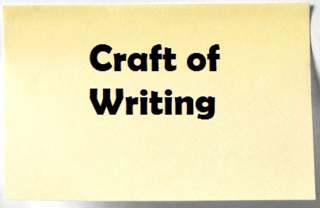 to tighten your writing is to leave out the laugh track. In comedy television shows, fake recorded laughter often is added to suggest that an audience is present – and to suggest to viewers at home that they also should find a joke humorous. In your story, a laugh track is present when you also give readers hints aabout how they should react. American writer Lewis Shiner coined the term.
to tighten your writing is to leave out the laugh track. In comedy television shows, fake recorded laughter often is added to suggest that an audience is present – and to suggest to viewers at home that they also should find a joke humorous. In your story, a laugh track is present when you also give readers hints aabout how they should react. American writer Lewis Shiner coined the term.
Possible examples of a laugh track in your story might include characters laughing at their own jokes or crying when they feel emotional pain.
If you’ve written your story well enough, the reader shouldn’t need to be told that the character is laughing or crying. The reader will feel the humor or inner turmoil themselves and can imagine the characters guffawing or weeping.
Indeed, by directly telling what characters feel, you run the risk of readers disengaging from the story. That’s because a laugh track is telling rather than showing and so is a form of countersinking.
An exception (and there’s always an exception!) is when characters have an emotional response that isn’t “ordinary,” such as laughing at an extremely inappropriate joke. This can help give readers a sense of what the character is really like – in this case uncouth and depending on the joke possibly racist, chauvinist or just plain strange.
Need an editor? Having your book, business document or academic paper proofread or edited before submitting it can prove invaluable. In an economic climate where you face heavy competition, your writing needs a second eye to give you the edge. I can provide that second eye.
Related articles
 Tighten writing by cutting begin fallacy
Tighten writing by cutting begin fallacy Avoid card tricks in the dark when writing
Avoid card tricks in the dark when writing Five style issues to watch for in your story
Five style issues to watch for in your story Coax readers to eat your story's veggies
Coax readers to eat your story's veggies Make final words of your story count
Make final words of your story count
November 11, 2013
Delete bogus alternatives from your story
Whenever trying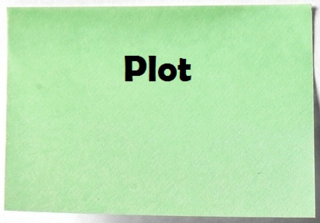 to resolve a problem, a main character has to decide how to do so. Along the way, he may have to weigh the pros and cons of each possible solution. Writers go through this weighing process as trying to decide which decisions are the most believable and yields the greatest dramatic payoff.
to resolve a problem, a main character has to decide how to do so. Along the way, he may have to weigh the pros and cons of each possible solution. Writers go through this weighing process as trying to decide which decisions are the most believable and yields the greatest dramatic payoff.
Sometimes novice writers slow their plot by listing which choices weren’t made and then explaining ad nauseam why the character came to that decision. Such narration is called a “bogus alternative,” a term coined by American writer Lewis Shiner.
An example of a bogus alternative would be: I didn’t head into the desert, even though it was the shorter route, because I didn’t have enough water. It also meant I would have had to spend the night sleeping out in the open where coyotes lurk. Perhaps I should have just stayed where I was, but…
This cumbersome narration need not be told to the reader. The reader should be able to infer why the character made the decision he did. For example, before the character decides what to do, you might write: Two options faced me: A three-day journey across the broad desert plain or a week-long hike along the dry riverbed. I jiggled my half-empty canteen. Maybe there were puddles beneath overhangs on the riverbank.
From this, the reader knows he can’t take the shorter route because he’ll run out of water. That’s really that needs to be said.
Explaining afterward why the character didn’t make a choice only slows the plot. Writers ought to cut it from their story.
When writers employ bogus alternatives, they demonstrate a lack of confidence in either their own writing or in the reader. They believe that their plot isn’t clear enough so that readers won’t understand the main character’s actions. In other cases, the writer is simply penning his own thoughts about how to develop the story. He must learn to distinguish the difference between thinking about the story and telling the story.
Need an editor? Having your book, business document or academic paper proofread or edited before submitting it can prove invaluable. In an economic climate where you face heavy competition, your writing needs a second eye to give you the edge. I can provide that second eye.
Related articles
 Strengthen story with him vs. himself conflict
Strengthen story with him vs. himself conflict Give readers sleepless nights with narrative drive
Give readers sleepless nights with narrative drive Limit number of key characters in story
Limit number of key characters in story Coax readers to eat your story's veggies
Coax readers to eat your story's veggies Avoid using weak pushbutton words in story
Avoid using weak pushbutton words in story
November 10, 2013
Five great quotations about poetry
“A poet can survive everything but a misprint.” – Oscar Wilde
“Poetry is a deal of joy and pain and wonder, with a dash of the dictionary.” – Khalil Gibran
“Poetry is what gets lost in translation.” – Robert Frost
“A poet gives life to his thoughts and feelings and with inspiration, breathes life into his work for it to live forever but to fly, they need wings, and only in the magical world called music can they have wings.” – Hovhannes Tumanian
“One merit of poetry few persons will deny: It says more and in fewer words than prose.” – Voltaire
Need an editor? Having your book, business document or academic paper proofread or edited before submitting it can prove invaluable. In an economic climate where you face heavy competition, your writing needs a second eye to give you the edge. I can provide that second eye.
Related articles
 Place commas inside quotation marks
Place commas inside quotation marks Construct a 'What Others are Saying' web page
Construct a 'What Others are Saying' web page
November 9, 2013
How do you know when your book is done?
Some writers 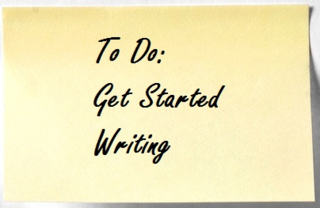 rush to get a book out, even though it’s full of typos or major flaws plague the story arc. A good many writers, however, never even reach the publishing stage because they’re still “working” on their book. Dissatisfied that their manuscript isn’t of a high enough standard, they continue to tinker and polish, so that their "final draft" perpetually remains a fuzzy vision.
rush to get a book out, even though it’s full of typos or major flaws plague the story arc. A good many writers, however, never even reach the publishing stage because they’re still “working” on their book. Dissatisfied that their manuscript isn’t of a high enough standard, they continue to tinker and polish, so that their "final draft" perpetually remains a fuzzy vision.
The result sometimes can be frustration that leaves the writer to shelving a good book...or worse, messing up a really good text that should have been left alone.
So when do you know that your book is “done,” that it is ready to be published? You might tackle the revising of the book in three steps.
The first step is to ensure you've completed the story arc. If there's nothing more to say about the plot and the characters because their tale has been told from start to finish – a central problem was presented and after several failures by the main character the central problem was resolved in a way that makes sense and in a consistent point of view – then there’s no need to keep working on the content.
That second step is to buff out the poorly written sentences and to make sure there aren’t any typos. A writer always can find a line they want to change – authors as diverse as John Lennon and Henry James either republished their works with different wording or said they wish they could – so to counter that, you have to set an artificial date for publishing. That means setting a deadline for correcting these typos and polishing the manuscript. The deadline probably should not be a timeframe (such as “six months”) but after a set number of readings of a manuscript.
How many readings is enough? Three is a good minimum number, but six or seven times probably is too many. You presumably were good in language arts and literature classes and so already have a good understanding of grammar, punctuation, spelling and storytelling. Your writing probably is better than you think.
After completing those readings, the third step is to have someone you trust and who is in the know read your manuscript. A person “in the know” means a professional editor or a literary agent who you trust. That person will focus on getting you to fix the stuff that doesn't work. When you've made it through their lists, you’re ready to publish.
Need an editor? Having your book, business document or academic paper proofread or edited before submitting it can prove invaluable. In an economic climate where you face heavy competition, your writing needs a second eye to give you the edge. I can provide that second eye.
Related articles
 Get ideas from you head onto paper
Get ideas from you head onto paper What to look for when revising your manuscript
What to look for when revising your manuscript Basic steps to follow in mainstream publishing
Basic steps to follow in mainstream publishing Smiling Tree Writing interviews IRES editor
Smiling Tree Writing interviews IRES editor How to use Track Changes on your manuscript
How to use Track Changes on your manuscript
November 8, 2013
How long and frequent should author’s blog be?
How frequently you’ll blog largely depends on your time constraints and your readers’ thirst for information from and about you. More than once a day is too much, but you probably want to have an entry every 2-3 days and certainly no less than once a week if you’re to maintain readership.
you’ll blog largely depends on your time constraints and your readers’ thirst for information from and about you. More than once a day is too much, but you probably want to have an entry every 2-3 days and certainly no less than once a week if you’re to maintain readership.
Of course, blogging will cut into your writing time, so you want to limit the length of your blogs. That’s a good idea anyway, as most online readers aren’t interested in reading particularly long entries. Between 30 and 1,250 words is good for a good a blog entry. This entry is 212 words long.
To keep blogs from diminishing your book writing time, you may want to try penning blog entries that can be used in future tomes; this is particularly useful if you’re writing nonfiction. Though my focus is on a single book, via my blog I’m actually writing five or six other books as I change up the topic matter each day. Since blogs typically allow you to see how many people are reading each entry you can quickly get a good sense of what topics are of the most interest to readers and so refocus your efforts on the book ideas that will have the most appeal.
Finally, don’t forget that you can earn money by blogging. You can place ads on your blog entries (whoever is your blog host will have tutorials on how), and even select which products you want to sell. Choose products that are related to your entry; for example, when I wrote about treating a fall injury on my hiking blog, my ads focused on first-aid kits and equipment readers might purchase. If you have teens in your household, they might be interested in taking over this aspect of your blog so that way you’re not wasting time marketing when you want to be writing. Once you have a good blog following, and if you do a good job of targeting the ads to your entry, you can earn a few hundred dollars a year from this advertising.
Need an editor? Having your book, business document or academic paper proofread or edited before submitting it can prove invaluable. In an economic climate where you face heavy competition, your writing needs a second eye to give you the edge. I can provide that second eye.
Related articles
 Construct a 'What Others are Saying' web page
Construct a 'What Others are Saying' web page Forewords, prefaces and introductions
Forewords, prefaces and introductions Improve your writing by dumping fuzzy words
Improve your writing by dumping fuzzy words What to look for when revising your manuscript
What to look for when revising your manuscript
November 7, 2013
Use appendix to add extra info to your book
You may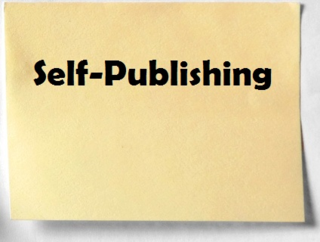 want to include in your book a series of lists or reprints of articles that relate to your text but just don’t seem to work when placed in the main body. No worries – you can include his material in an appendix.
want to include in your book a series of lists or reprints of articles that relate to your text but just don’t seem to work when placed in the main body. No worries – you can include his material in an appendix.
An appendix is an addendum to your main text. For example, in Colin Fletcher’s classic hiking guide, “The Complete Walker III,” he included four appendices: a checklist of equipment; a list of mail-order retailers of backpack equipment, foods and services; a list of organizations that promote hiking; and quotations about hiking. The appendices follow the main text of your book or come right after the last chapter.
Of course, with today’s superb design software, such lists easily can be incorporated into the main text as breakout boxes or sidebars in spots where they’re mentioned. Sometimes, though, the lists simply are too long – Fletcher’s list of organizations that promote hiking runs 16 pages! That’s simply too much to place within the main text as a breakout box or sidebar, as readers will lose track of what is the main text and what isn’t.
Typically each appendix is given a Roman numeral (Appendix I, Appendix II, etc.) or a letter (Appendix A, Appendix B, etc.) to help separate them from the other appendices and from the main text’s chapters (which typically are numbered).
The page numbering that started back with the introduction continues through the appendices.
Need an editor? Having your book, business document or academic paper proofread or edited before submitting it can prove invaluable. In an economic climate where you face heavy competition, your writing needs a second eye to give you the edge. I can provide that second eye.
Related articles
 Editor appearing at River Falls book event
Editor appearing at River Falls book event Hiking books now on sale at Annz Books
Hiking books now on sale at Annz Books How to write a press release for your book
How to write a press release for your book Forewords, prefaces and introductions
Forewords, prefaces and introductions How to create your book's table of contents
How to create your book's table of contents
November 6, 2013
Pardon me, mam (or maybe it's ma’am?)
“Mam” refers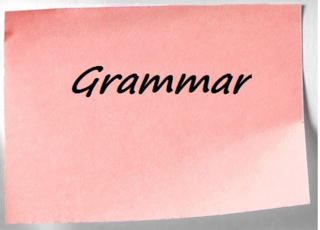 to a member of a Mayan people of southwestern Guatemala or to the language they speak. “Ma’am” is the correct spelling of the polite address of a woman, as in “Thank you for the change, ma’am.”
to a member of a Mayan people of southwestern Guatemala or to the language they speak. “Ma’am” is the correct spelling of the polite address of a woman, as in “Thank you for the change, ma’am.”
Need an editor? Having your book, business document or academic paper proofread or edited before submitting it can prove invaluable. In an economic climate where you face heavy competition, your writing needs a second eye to give you the edge. I can provide that second eye.
Related articles
 Show some (dis)respect: capitalizing official titles
Show some (dis)respect: capitalizing official titles Improve your writing by dumping fuzzy words
Improve your writing by dumping fuzzy words Construct a 'What Others are Saying' web page
Construct a 'What Others are Saying' web page All in order: Follow up vs. follow-up vs. followup
All in order: Follow up vs. follow-up vs. followup Forewords, prefaces and introductions
Forewords, prefaces and introductions



